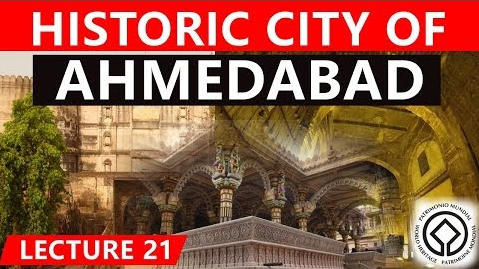Table of Contents
CULTURAL SITES
- Agra Fort (1983)
- Ajanta Caves (1983)
- Archaeological Site of Nalanda Mahavihara at Nalanda, Bihar (2016)
- Buddhist Monuments at Sanchi(1989)
- Champaner-Pavagadh Archaeological Park (2004)
- Chhatrapati Shivaji Terminus (formerly Victoria Terminus) (2004)
- Churches and Convents of Goa(1986)
- Elephanta Caves (1987)
- Ellora Caves (1983)
- Fatehpur Sikri (1986)
- Great Living Chola Temples (1987,2004)
- Group of Monuments at Hampi (1986)
- Group of Monuments at Mahabalipuram (1984)
- Group of Monuments at Pattadakal (1987)
- Hill Forts of Rajasthan (2013)
- Historic City of Ahmadabad (2017)
CULTURAL SITES
- Humayun’s Tomb, Delhi (1993)
- Khajuraho Group of Monuments (1986)
- Mahabodhi Temple Complex at Bodh Gaya (2002)
- Mountain Railways of India (1999,2005,2008)
- Qutb Minar and its Monuments, Delhi (1993)
- Rani-ki-Vav (the Queen’s Stepwell) at Patan, Gujarat (2014)
- Red Fort Complex (2007)
- Rock Shelters of Bhimbetka (2003)
- Sun Temple, Konârak (1984)
- Taj Mahal (1983)
- The Architectural Work of Le Corbusier, an Outstanding Contribution to the Modern Movement (2016)
- The Jantar Mantar, Jaipur (2010)
- Victorian Gothic and Art Deco Ensembles of Mumbai (2018)
NATURAL
- Great Himalayan National Park Conservation Area (2014)
- Kaziranga National Park (1985)
- Keoladeo National Park (1985)
- Manas Wildlife Sanctuary (1985)
- Nanda Devi and Valley of Flowers National Park(1988,2005)
- Sundarbans National Park (1987)
- Western Ghats(2012)
Mixed
- Khangchendzonga National Park (2016)
HISTORY
- The Historic City of Ahmadabad or Old Ahmedabad, the walled city of Ahmedabad in India, was founded by Ahmad Shah I of Gujarat Sultanate in 1411.
- It remained the capital of the Gujarat Sultanate and later important political and commercial centre of Gujarat.
- Despite having become extremely crowded and dilapidated, it still serves as the symbolic heart of metropolitan Ahmedabad. It was inscribed as the World Heritage City.
- In the eleventh century, Karna of Chaulukya dynasty ruling from Anhilwad Patan (1072-1094) made the town his capital and named it Karnavati (Karan’s town) or Shrinagar (prosperous city) and Rajnagar (king’s town).
- Ahmed Shah I laid the foundation of Bhadra Fort starting from Manek Burj, the first bastion of the city in 1411 which was completed in 1413.
- His grandson Mahmud Begada transferred capital from Ahmedabad to Muhammadabad from 1484 to 1535 but carried out second fortification of the city
- Later Ahmedabad again became capital of sultanate until it fell to Mughals in 1573. During Mughal rule (1572-1707), Bhadra Fort served as the seat of Governor of Gujarat.
- During Mughal and Maratha struggle (1707–1753) to control the city, the city was harmed and several suburbs were depopulated.
- Later during Maratha rule (1758–1817), the city revenue was divided between Peshwa and Gaekwad. These affected economy of the city due to more extraction of taxes. In 1817, Ahmedabad fell under British Company rule which stabilized the city politically and improved the trade.
BHADRA FORT

CITY
- Square in form, enclosing an area of about forty-three acres, the Bhadra fort had eight gates.
- The construction of Jama Masjid, Ahmedabad completed in 1423. As the city expanded, the city wall was expanded. So the second fortification was carried out by Mahmud Begada in 1486, the grandson of Ahmed Shah.
- Another popular site, the Jhulta Minar, or Shaking Minarets, is known both for the beauty of its design—the three-story minarets are covered in intricate carvings— and for an engineering curiosity
- The King’s Tomb or the Badshah no Hajiro, lying to the east of Jama Masjid, and connected by a doorway, houses the tombs of Ahmed Shah I, his son Muhammed Shah II and grandson Ahmed Shah II.
- Not to be missed is the 16th century Sidi Sayeed Mosque. The intricately carved stone ‘jaali’ work, especially along the windows of the western wall, look as fine as lace patterns.
AMER FORT
- Ahmedabad too is home to several stepwells, locally called Vav, a key feature of old cities of Gujarat. Two of the most popular stepwells are the Adalaj Vav and the Dada Harir Vav.
- Home to Mahatma Gandhi’s Sabarmati Ashram, Ahmedabad also played host to Bengali poet Rabindranath Tagore.
























 WhatsApp
WhatsApp